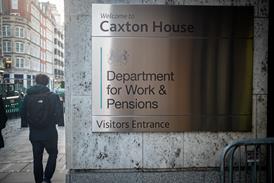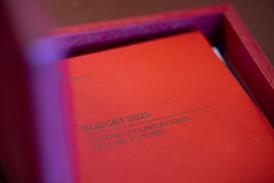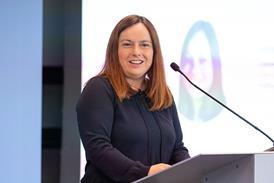Workplace pension participation is stalling after reaching a rate of 88 per cent of eligible employees last year, according to new figures from the Department for Work and Pensions.
The statistics published on June 28 showed that while the increase in participation since the advent of auto-enrolment in 2012 continues to level off, some communities sit far below the national average when it comes to being enrolled in a workplace pension.
A separate government study of employer pension provision revealed that more than two-thirds of bosses are in favour of lowering the age at which people are automatically enrolled into a pension from 22 to 18, in line with a key conclusion of the DWP’s 2017 auto-enrolment review.
Twenty million eligible savers were enrolled in workplace pensions in 2021, representing a participation rate of 88 per cent, up from 55 per cent in 2012.
The idea of abolishing the lower earnings limit completely could be a hard message during a cost of living crisis
David Gibb, Quilter
“After years of growth in participation during the roll-out of automatic enrolment, participation rates have stabilised,” the report stated.
Participation falls from 88 per cent to 79 per cent when ineligible employees are included, however.
Savers stick with pensions despite pandemic
The coronavirus pandemic and its associated economic pressures did not appear to derail pensions participation. The percentage of those contributing at least 6.5 per cent of their earnings decreased slightly from 46.7 per cent in the fourth quarter of 2019 to 2020, to 45.4 per cent in Q4 2021 to 2022.
The data also revealed differences in pension savings trends between the private and public sectors.
In the former, the average amount saved by eligible men fell by £60 in 2021 compared with 2020. For women, this dropped by £100. In the latter, meanwhile, this dropped by £520 for men, compared with a decrease of £100 for women.
Female participation exceeded that of their male counterparts, however, at 91 per cent and 89 per cent respectively. Part-time female workers are significantly more likely to have workplace pensions than part-time men, at 86 per cent and 74 per cent respectively.
The DWP’s findings also revealed a participation rate of below 65 per cent for some eligible groups including micro employers, and around 66 per cent for Pakistani and Bangladeshi staff.
Rebecca O’Connor, head of pensions and savings at Interactive Investor, said: “The tide of pension participation has been rising steadily into a glorious swell over the past 10 years thanks to auto-enrolment, but it hasn’t lifted all boats.
“Gaps in participation remain and must be a priority for policymakers so that the UK’s divided retirement outlook doesn’t persist. Everyone should have easy access to decent retirement savings options through work.
“The level of contributions must also increase, as while higher participation in pensions is the first door to unlock to better retirement outcomes, the second is to get more money going in.”
Quilter chartered financial planner David Gibb suggested that the current economic backdrop may pose a challenge to increase the number of savers who are automatically enrolled into an occupational pension.
“The idea of abolishing the lower earnings limit completely could be a hard message during a cost of living crisis,” he said.
“Although the actual pounds and pence difference in people’s pockets would be relatively modest, making this tweak when people are already financially struggling may prove unpopular.
“Automatic enrolment relies on inertia, and ideally you don’t want to force people to make the decision between income today and income in old age at a time like this.”
Employers disagree over contributions calculations
The government asked employers for their views on two prospective reforms to auto-enrolment. It found that 68 per cent of employers were in favour of lowering the age of auto-enrolment from 22 to 18, versus 17 per cent against.
Meanwhile, 43 per cent of employers were in favour of pension contributions being calculated from the first pound earned instead of the lower earnings threshold, with 37 per cent against.
These amendments have been mooted as solutions to closing the gender pensions gap, which stood at 55 per cent in 2021 for those at retirement, according to Legal & General.
ABI calls for 12% auto-enrolment minimum contributions by 2031
The Association of British Insurers has called on the government to increase minimum auto-enrolment contributions to 12 per cent by 2031.
Aegon head of pensions Kate Smith warned that the cost of living crisis could push savers to end their participation in occupational schemes, which would also impact employer provision. The opt-out rate stood at 9 per cent in 2019, which is unchanged from its 2017 level.
“There’s a real risk that employees could be tempted to stop their pension contributions, as they make stressed financial decisions to make ends meet,” she said.
“This is likely to lead to employer contributions also stopping, so should be a last resort.”






















